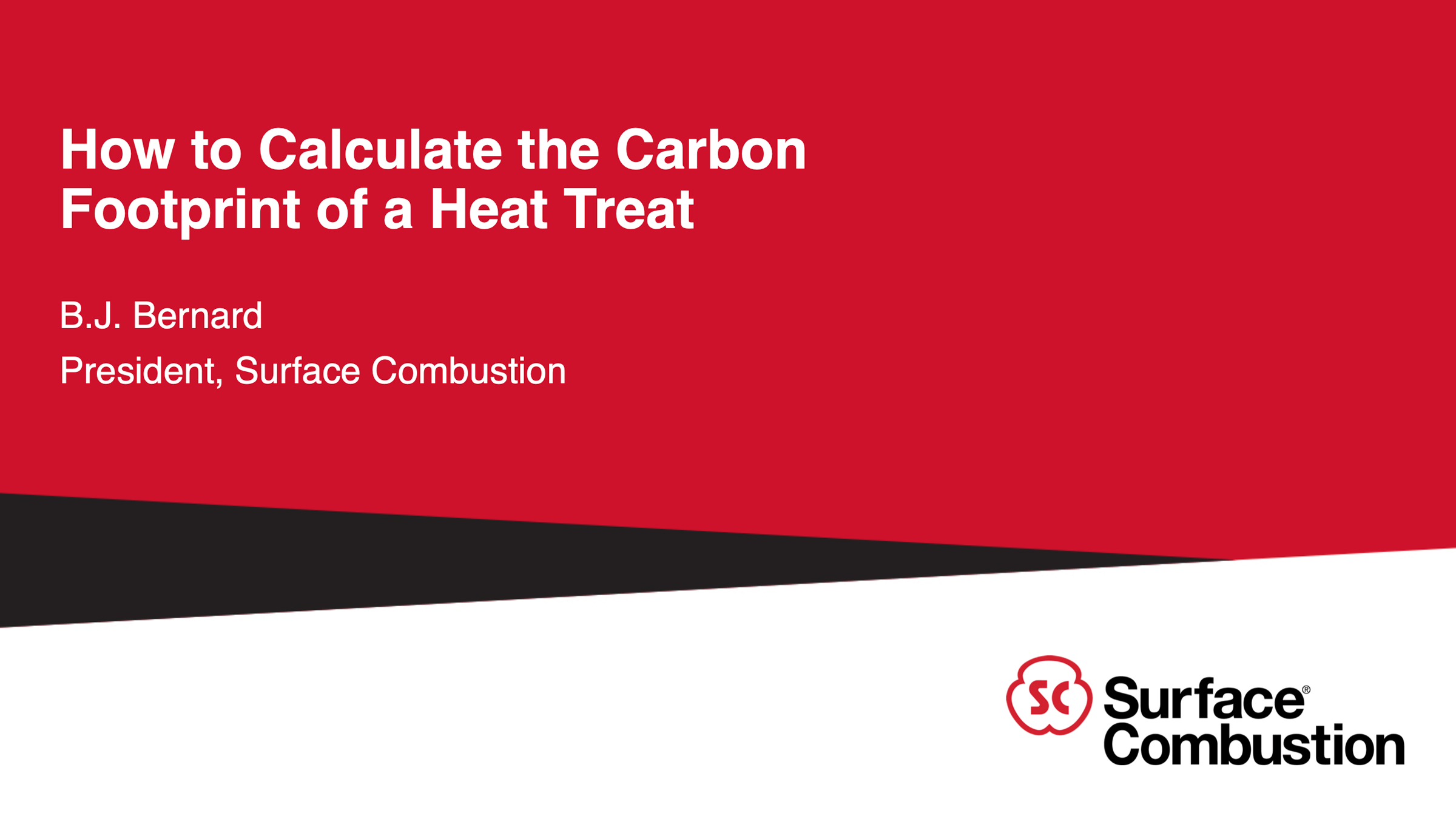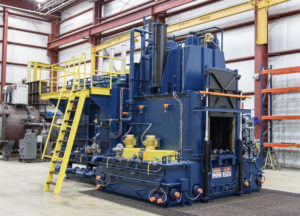
Energy Efficiency Considerations
Energy Efficiency Considerations
Today more than ever, the operators of industrial heat treating facilities are interested in understanding and reducing their carbon footprint and greenhouse gas (GHG) emissions while improving energy efficiency. Surface Combustion makes your sustainability efforts sustainable as we holistically consider all costs including capital expenditures, maintenance budget, and operating costs. Surface Combustion was founded on a more efficient heating method, “Surface Combustion”, and we continue to pioneer more efficient methods for heat treat processes using our industrial furnace and atmosphere gas generator equipment. We understand the user experience is paramount to technology acceptance and therefore promote reliable, repeatable, and rugged equipment per our guiding principles: Technology – Integrity – Tradition
Why Energy Efficiency Matters
According to the DOE, the industrial sector is responsible for about one-third of all U.S. primary energy use and the associated greenhouse gas (GHG) emissions. And process heating consumes more energy than any other manufacturing system – more than 7,000 Trillion Btu (TBtu), or approximately 61% of manufacturing onsite energy use annually.
Opportunities to reduce the energy use for process heat include more efficient heat generation, system designs and materials that help reduce heat loss prior to use, greater energy efficiency, and alternative manufacturing processes that require less heat, such as low temperature processes like nitriding, ferritic nitrocarburizing (FNC) and plasma (ion) nitriding.
Reduce, Reduce, Reduce
You can reduce your heat treat facility’s energy consumption and carbon footprint through a range of solutions, such as investing in new energy efficient equipment and technologies, implementing heat recovery and regenerator equipment, and considering lean manufacturing approaches. Setting goals for reduction efforts, such as reducing the amount of fuel burned and electricity consumed, can help eliminate up to 10% of your carbon footprint, too.
Start With Burner Tuning and Maintenance
By simply tuning the burners throughout your facility, you can see immediate energy savings and potentially achieve a 25% to 50% reduction in your carbon footprint. In fact, having properly tuned burners and a well-maintained furnace are some of the best ways to ensure your system is performing efficiently to help reduce energy consumption and carbon emissions. Additionally, keeping your furnace at a constant temperature to minimize the waste related to thermal cycling and even pre-heating with waste gasses or biofuels are other suggestions for maintenance or retrofit solutions. Contact us to schedule furnace maintenance and/or burner tuning service in your facility.
Know Your Energy Source
The fact is, when assessing the best fuel source for powering your facility’s heat treat equipment most efficiently and economically, your geographic location is an important factor in determining the best heat treat process and fuel source to select for your production facility. You can optimize your energy efficiency and carbon offsets by selecting the most economical fuel source in your geographic region. For instance, some regions of the U.S. have a more readily available supply of natural gas or coal while other regions might have greater access to electricity generated through green resources like hydroelectric, nuclear, solar or wind. Therefore, the various fuel options have different levels of efficiency.
How Surface Can Help
The experts at Surface Combustion can help you calculate operating costs and CO2 emissions. Then assess your energy consumption for energy reduction goals, and discuss electrification with respect to emissions reduction goals. We’ll work with you to determine the most efficient heat treat process for your application and then select the best Surface heat treat equipment and technologies to maximize energy efficiency and production times. We offer a wide range of standard equipment options, from atmosphere gas carburizing Allcase® furnaces to vacuum carburizing oil quench furnace, as well as custom engineered heat treat products. Surface Combustion offers education on available technologies and baseline assessments that aid in selecting the sustainable choice for ongoing operations and corporate environmental initiatives.
For Additional Energy Efficiency Insights
Watch Surface Combustion’s presentation to the Industrial Heating Equipment Association (IHEA) on the topic of sustainability and decarbonization, and how to calculate your thermal process carbon footprint, here. Download the U.S. Department of Energy’s sourcebook for industry: Improving Process Heating System Performance here.
Surface is your Source.

Calculate YOUR Carbon Footprint!
Discover how green your operations are with Surface Combustion’s easy 5-step Carbon Footprint Calculator. Make sustainability your business’s new benchmark—start measuring and managing your environmental impact today.
View PDFRelated Products:
Featured Product
Allcase® Batch Integral Quench Furnace
A heat treating furnace where the load enters the quench tank at predetermined times, all at once. For example, a Surface Combustion Allcase® batch furnace may have a 2500-pound load entering the quench tank once every two hours. Maximum operating temperatures up to 1950oF, with vertical and horizontal radiant tube configurations. Allcase® family also includes RTB and ACT.

 cycle
cycle operation
operation hours per year
hours per year available space
available space operating temperature range
operating temperature range heat source
heat source